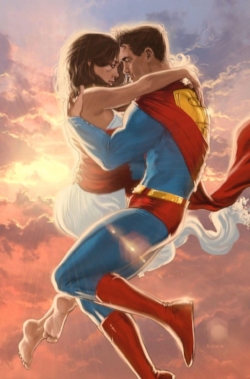The first major comic I read as a kid was Superman #75. This isn’t unique to me. Released on November 18th, 1992, that book was the culmination of the Death of Superman, in which Supes and beastly kill machine Doomsday perished at each other’s hands. I was 9 and not exactly an active participant in our economy, so I had to read a copy belonging to a friend’s older brother in the basement of their house. I can still smell must mingling with that glorious new comic aroma.
It was formative. I loved Superman almost as much as I did my parents (again, I was 9). Every page in the book was a single panel; this was something special, something epic and grandiose. There had even been stories on the news—TV and print—about the gravitas of it all. Basically, it felt like we’d never see a comic so huge again, and I’d argue that we haven’t.
You can make a case for other books in the past 25 years being more influential or important, but it’s hard to argue another comic has garnered as much attention upon release as Superman #75—until now. Enter Action Comics #1000.
Landing on April 18, 2018, just shy of 80 years since the landmark Action Comics #1 launched the superhero concept, this book will celebrate all things Superman, and, in many ways, all Superman has given rise to, including superheros, shared universes, accessible science fiction, and so many allegories about hope. To mark the occasion DC has tapped a veritable army (or at least a squad) of the best artists in comics to do variant covers.
A cynical view is that DC is simply milking this achievement for every last dime, and, for sure, these variants are a sure fire way to bank. The more optimistic take, however, and the one more fitting for Superman, is that each of these artists had a moment like I did when I was 9, a moment blending an intense love of the character with a sense that his adventures were meaningful, and that these variants each represent that feeling, that formative bit of our histories put to paper.
Anyway, there’s no denying these covers look great, which is why today we’re taking a look at some of our favorites, and sharing a few thoughts about what makes them special.
Behold! In no particular order our favorite Action Comics #1000 variants:
Newbury Comics Variant by Patrick Gleason
One of the best parts of DC’s Rebirth publishing initiative (which is essentially ending with Action Comics #1000, but that’s a whole other story…) was how it revitalized Superman by putting his wife Lois and son Jon back into his life. Patrick Gleason, the artist responsible for this cover, was vital to that run, which he commemorates beautifully here, depicting Superman, Lois Lane, Jon, Krypto, and the flag of the good ol’ U.S. of A.



















